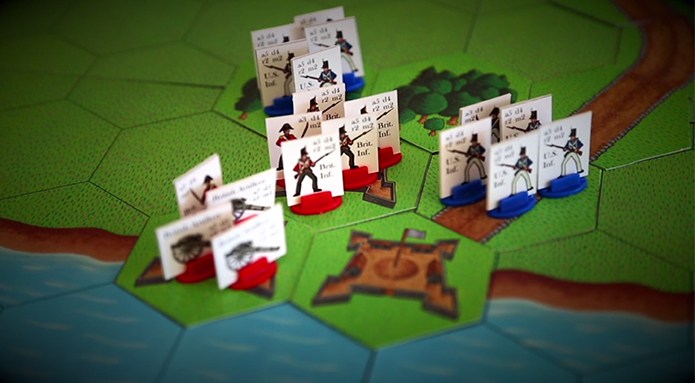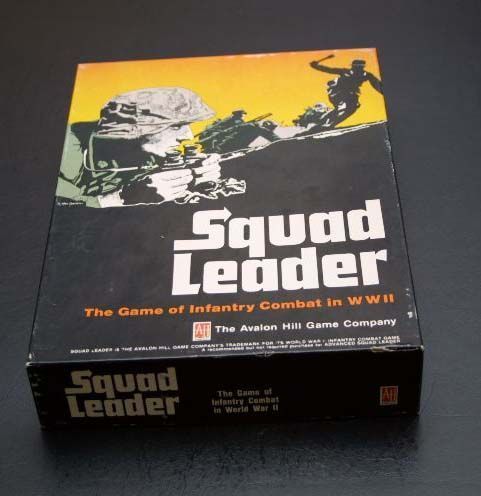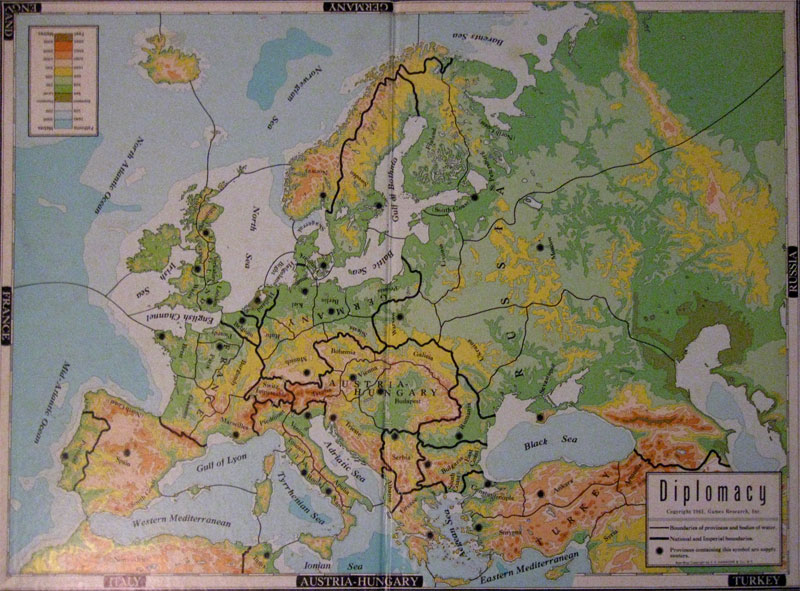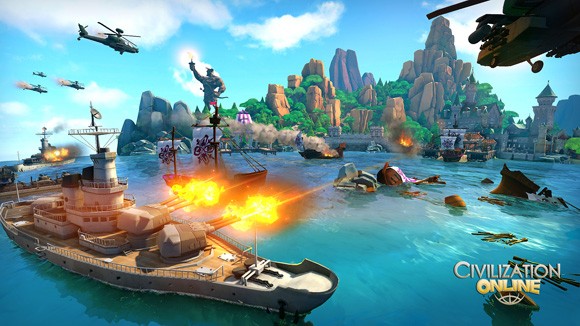Strategy Page has a great summary of the German plan to invade Britain and the most likely outcome if the invasion had ever been attempted:
Operation Sealion, or, in the original German Unternehmen Seelöwe, is one of the most famous “what ifs” of the Twentieth Century.
On July 16, 1940, following the collapse of France, the Dunkerque evacuation, and the rejection of his peace overtures, Adolf Hitler issued Führer Directive No. 16, which initiated preparations for an invasion of Britain. At the time, it seemed to many that if Hitler had tried an offensive across the English Channel a defenseless Britain would inevitably fall. But was it so? What were Hitler’s chances?
In 1973 historian Paddy Griffith, just beginning his career as an instructor at the Royal Military Academy Sandhurst, decided to evaluate the chances of a successful German invasion of Britain by using a wargame.
Organization. Griffith’s wargame was much more than a board with a set of counters, a rule booklet, and some dice. It was a massive multiplayer game, which Griffith later wrote about in Sprawling Wargames. Based on traditional kriegsspiel methodology, the game involved several dozen players and umpires, all isolated from each other except by means of simulated signaling. Many of the players and umpires were veterans of the war from both sides. Among them were former wartime senior German officers such as Luftwaffe fighter Generalleutnant Adolf Galland and Kriegsmarine Vice Admiral Friedrich Ruge, as well as several men from both sides who had been lower ranking offices and later risen higher, including Christopher Foxley-Norris, who had commanded a fighter squadron during the Battle of Britain and rose to air chief marshal, Sir Edward Gueritz, a junior naval officer at the time who became a rear admiral, Heinz Trettner, who had served on the staff of the German airborne forces in 1940, rose to command a parachute division by war’s end, and later served as Inspector General of the post-war German air force, and Glyn Gilbert, a junior officer in one of the defending infantry battalions in 1941, who later rose to major general.
Each side was given the same forces, operational plans, and intelligence as it had in 1940. The game was based on the assumption that the Luftwaffe had still not won the battle for air supremacy over the Channel and southern England by the time the landings were scheduled to take place, in early September, which was in fact the case. The intelligence picture greatly favored the British, who had proven much better at securing information about the enemy’s plans and force than the Germans had on their own.
There’s even a mention of the (significant) Canadian contribution to the defence of Britain after Dunkirk:
The defending forces included the 1st Canadian Division (the most well-prepared division available, full strength and fully equipped, though without combat experience), plus the less-well prepared 2nd Canadian division and partial divisions from Australia and New Zealand.
Although I haven’t read Griffith’s book, my other readings on the subject align with the eventual outcome of the wargame:
Following the game the participants took part in a general analysis. Some interesting observations and conclusions were made. The British GHQ mobile reserve had not been engaged at all. In addition, casualties to the Royal Navy had been serious, but hardly devastating; of about 90 destroyers on hand, only five had been sunk and six seriously damaged, and only three of the three dozen cruisers had been lost, and three more heavily damaged.
Compare that to the actual Royal Navy losses during the evacuation of Crete — with little to no air support from the RAF, due to extreme distance from friendly airbases:
Attacks by German planes, mainly Ju-87s and Ju-88s, destroyed three British cruisers (HMS Gloucester, Fiji, and Calcutta) and three destroyers (HMS Kelly, Greyhound and Kashmir) between 22 May and 1 June. Italian bombers from 41 Gruppo sank one destroyer (Juno on 21 May and damaged another destroyer (Imperial) on 28 May beyond repair. The British were also forced to scuttle another destroyer (Hereward) on 29 May, that had been seriously damaged by German aircraft, and abandoned when Italian motor torpedo boats approached to deliver the coup de grâce.
Damage to the aircraft carrier HMS Formidable, the battleships HMS Warspite and Barham, the cruisers HMS Ajax, Dido, Orion, and HMAS Perth, the submarine HMS Rover, the destroyers HMS Kelvin and Nubian, kept these ships out of action for months. While at anchor in Suda Bay, northern Crete, the heavy cruiser HMS York was badly damaged by Italian explosive motor boats and beached on 26 March 1941. She was later wrecked by demolition charges and abandoned when Crete was evacuated in May. By 1 June the effective eastern Mediterranean strength of the Royal Navy had been reduced to two battleships and three cruisers to oppose the four battleships and eleven cruisers of the Italian Navy
And back to the Operation Sealion summary from Strategy Page:
All participants, German as well as British, agreed that the outcome was an accurate assessment of the probable result of an actual invasion.
Oddly, the Sandhurst wargame was designed on the basis of inaccurate information. Some time after the game, additional hitherto secret documents came to light, which revealed that the Germans probably had even less chance of success than they did in game. At the time the game was designed, the true extent of British “stay behind” forces, intended to conduct guerrilla operations in the rear of the invasion forces, and the sheer scale of defensive installations that had been erected across southern England in anticipation of an invasion were still classified; there were some 28,000 pill boxes, coastal batteries, strong points, blockhouses, anti-aircraft sites, and some other installations.
So assuming Hitler had for a time been serious about invading England, his decision to call it off was probably wise.







